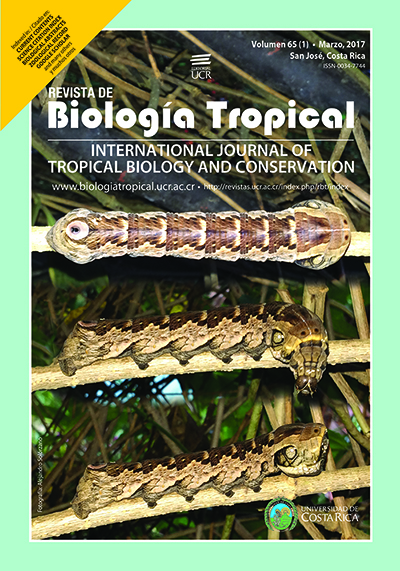Resumen
Es necesario estudiar a nivel preclínico la capacidad neutralizante de los antivenenos producidos en América Latina, para conocer su espectro de cobertura. En este estudio se analizó la eficacia preclínica de un antiveneno poliespecífico botrópico-crotálico producido por BIRMEX, en México, para neutralizar los efectos letal, hemorrágico, desfibrinogenante y coagulante in vitro de los venenos de Bothrops jararaca (Brasil), B. atrox (Perú y Colombia), B. diporus (Argentina), B. mattogrossensis (Bolivia) y B. asper (Costa Rica). Se emplearon metodologías de laboratorio estándar en los análisis. En consonancia con estudios anteriores con diversos antivenenos botrópicos en América Latina, se observó un amplio patrón de neutralización de estos venenos heterólogos en la mayoría de los efectos estudiados. Sin embargo, el antiveneno mostró una baja capacidad neutralizante contra el efecto desfibrinogenante de los venenos de B. atrox (Colombia) y B. asper (Costa Rica) y no neutralizó la actividad coagulante in vitro del veneno de B. asper (Costa Rica) a la máxima razón antiveneno/veneno empleada.Citas
Bogarín, G., Morais, J. F., Yamaguchi, I. K., Stephano, M. A., Marcelino, J. R., Nishikawa, A. K., Guidolin, R., Rojas, G., Higashi, H. G., & Gutiérrez, J. M. (2000). Neutralization of crotaline snake venoms from Central and South America by antivenoms produced in Brazil and Costa Rica. Toxicon, 38, 1429-1441.
Campbell, J. A., & Lamar, W. W. (2004). The Venomous Reptiles of the Western Hemisphere. Ithaca: Cornell University Press.
Cardoso, D. F., Yamaguchi, I. K., & Moura da Silva, A. M. (2009). Produçao de soros antitoxinas e perspectivas de modernizaçao por técnicas de biología molecular. In J. L. C. Cardoso, F. O. S. França, F. H. Wen, C. M. S. Málaque, & V. Haddad (Eds.), Animais peçonhentos no Brasil. Biologia, clínica e terapêutica dos acidentes (2ª Ed., pp. 419-431). Sao Paulo: Sarvier.
de Roodt, A. R., Dolab, J. A., Fernández, T., Segre, L., & Hajos, S. E. (1998). Cross-reactivity and heterologous neutralization of crotaline antivenoms used in Argentina. Toxicon, 36, 1025-1038.
Fan, H. W., & Cardoso, J. L. (1995) Clinical toxicology of snake bites in South America. In J. Meier & J. White (Eds.), Handbook of clinical toxicology of animal venoms and poisons (pp. 667-688). Boca Raton: CRC Press.
Finney, D. J. (1971). Probit analysis. Cambridge: Cambridge University Press.
França, F. O. S., & Málaque, C. M. S. (2009). Acidente botrópico. In J. L. C. Cardoso, F. O. S. França, F. H. Wen, C. M. S. Málaque, & V. Haddad (Eds.), Animais peçonhentos no Brasil. Biologia, clínica e terapéutica dos accidentes (2ª Ed., pp. 81-95). Sao Paulo: Sarvier.
Gené, J. A., Roy, A., Rojas, G., Gutiérrez, J. M., & Cerdas, L. (1989). Comparative study on coagulant, defibrinating, fibrinolytic and fibrinogenolytic activities of Costa Rican crotaline snake venoms and their neutralization by a polyvalent antivenom. Toxicon, 27, 841-848.
Gutiérrez, J. M. (2010). Snakebite envenomation in Central America. In S. P. Mackessy (Ed.), Handbook of venoms and toxins of reptiles (pp. 491-507). Boca Raton: CRC Press.
Gutiérrez, J. M. (2014). Reducing the impact of snakebite envenoming in Latin America and the Caribbean: achievements and challenges ahead. Transactions of the Royal Society of Tropical Medicine and Hygiene, 108, 530-537.
Gutiérrez, J. M., Higashi, H. G., Wen, F. H., & Burnouf, T. (2007). Strengthening antivenom production in Central and South American public laboratories: report of a workshop. Toxicon, 49, 30-35.
Gutiérrez, J. M., Rojas, G., Bogarín, G., & Lomonte, B. (1996). Evaluation of the neutralizing ability of antivenoms for the treatment of snake bite envenoming in Central America. In C. Bon & M. Goyffon (Eds.), Envenomings and their treatment (pp. 223-231). Lyon: Fondation Marcel Mérieux.
Gutiérrez, J. M., Rojas, G., Lomonte, B., Gené, J. A., Chaves, F., Alvarado, J., & Rojas, E. (1990). Standardization of assays for testing the neutralizing ability of antivenoms. Toxicon, 28, 1127-1129.
Otero, R., Núñez, V., Osorio, R. G., Gutiérrez, J. M., Giraldo, C. A., & Posada, L. E. (1995). Ability of six Latin American antivenoms to neutralize the venom of mapaná equis (Bothrops atrox) from Antioquia and Chocó (Colombia). Toxicon, 33, 809-815.
Otero-Patiño, R. (2009). Epidemiological, clinical and therapeutic aspects of Bothrops asper bites. Toxicon, 54, 998-1011.
Pope, C. G. (1939). The action of proteolytic enzymes on the antitoxins and proteins in immune sera. I. True digestión of the proteins. British Journal of Experimental Pathology, 20, 132-149.
Segura, Á., Castillo, M. C., Núñez, V., Yarlequé, A., Gonçalves, L. R. C., Villalta, M., Bonilla, C., Herrera, M., Vargas, M., Fernández, M., Yano, M. Y., Araújo, H. P., Boller, M. A., León, P., Tintaya, B., Sano-Martins, I. S., Gómez, A., Fernández, G. P., Geoghegan, P., Higashi, H. G., León, G., & Gutiérrez, J. M. (2010). Preclinical assessment of the neutralizing capacity of antivenoms produced in six Latin American countries against medically-relevant Bothrops snake venoms. Toxicon, 56, 980-989.
Segura, Á., Herrera, M., Villalta, M., Vargas, M., Uscanga-Reynell, A., Ponce de León-Rosales, S., Jiménez-Corona, M. E., Reta-Mares, J. F., Gutiérrez, J. M., & León, G. (2012). Venom of Bothrops asper from Mexico and Costa Rica: Intraspecific variation and cross-neutralization by antivenoms. Toxicon, 59, 158-162.
Warrell, D. A. (2004) Snakebites in Central and South America: Epidemiology, clinical features, and clinical management. In J. A. Campbell & W. W. Lamar (Eds.), The venomous reptiles of the Western Hemisphere (Vol I, pp. 709-761). Ithaca: Cornell University Press.
Comentarios

Esta obra está bajo una licencia internacional Creative Commons Atribución 4.0.
Derechos de autor 2017 Revista de Biología Tropical







